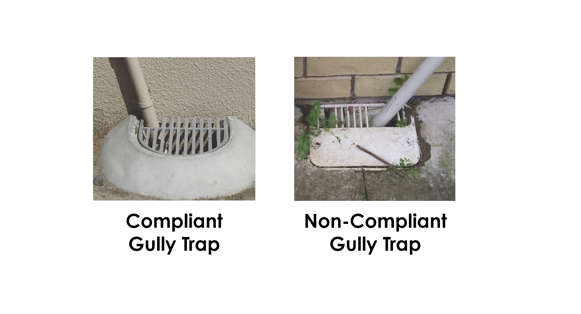Water, Wastewater and Stormwater projects and service updates
On this page you will find information about our infrastructure projects.
Waitomo District Council undertakes capital works projects to upgrade, replace and improve the essential services infrastructure in the district, for the benefit of the community and to protect the environment.
--
Inflow and Infiltration Investigation - July 2023 to January 2025
Property Inspections
The Waitomo District Council is undertaking a district-wide property inspection programme to identify any issues with inflow and infiltration (I&I) to our sewer collection system.
Council employees will be going door-to-door undertaking visual checks of stormwater and sewerage utilities at your property.
When property inspections are being undertaken in your area, the Waitomo District Council Three Waters Engineers will be wearing an orange vest and carrying a warrant card so they can be easily identified.
They will leave a calling card to notify you that your property has been inspected. If you have any queries regarding our staff entering your property, please phone Council on 0800 932 4357.
If you have any other enquiries regarding I&I and want to update Council with the outcome of your property inspection, please email [email protected] and include your address and contact details.
What is Inflow and Infiltration?
Inflow and Infiltration refers to rainwater and groundwater that enters the wastewater system through a variety of defects on public and private property.
Inflow is the direct discharge of stormwater (i.e rain water) entering the sewer collection system, often from low lying gully traps, yard drains, roof downpipes and cross connections from stormwater drains that connect directly to the sewer.
Infiltration is the stormwater that seeps into the ground and enters the sewerage system, including sewer service connections, through defects, cracks, and joints in the pipe.
A gully trap collects wastewater from the kitchen, bathroom and laundry. Gully traps that are not set up correctly can allow stormwater runoff to enter them and into the wastewater system where it shouldn’t be. Gully traps must be installed no less than 25mm above a paved surface such as a concrete driveway or foot path and no less than 100mm above an unpaved surface such as gardens and grass areas.

Sources of Inflow and Infiltration

Next steps, how can you help?
Once the inspection has been completed, property owners with a non-compliant gully trap or downspout will be contacted regarding the findings and advice on remedial actions. As a property owner, you play an important role in addressing this issue and helping to reduce the risk of overflows. If you find any issues that you can easily resolve, we encourage you to do this.
Why are we doing this?
During heavy rain events, the Waitomo District wastewater can overflow and get into our waterways, which has a detrimental effect on our environment.
Increased inflow and infiltration can overwhelm our sewer system. It can increase up to 10 times more than the average daily flow, which then causes overflows.
This increases the cost associated with wastewater pumping and treatment and can lead to the contamination of private properties and the environment.
This is not a new issue and it is not just happening in the Waitomo district, but it is something that Council must address.
Council has started various initiatives to reduce the inflow and infiltration to our sewer collection system.
These include:
- Private property inspections
- Sewer Manhole inspections
- CCTV inspections of the sewer mains
- Sewer renewals
Inflow and Infiltration Inspection Programme
| Location | Planned Inspection Dates |
| Te Kūiti | July 2023 September 2024 |
| Piopio | October - December 2024 |
| Maniaiti/Benneydale | January 2025 |
Legal Requirements
The Resource Management Act 1991, the Building Act 2004 and the Local Government Act 2002 provides local authorities to enter onto properties and carry out inspections relating to services provided.
Clause 28.3 Prevention of Inflow and Infiltration, Water Services Bylaw 2010.
Sub clause : 28.3.1 The customer must prevent any stormwater or groundwater (including water from roof downpipes, surface water run-off, overland flow, and sub-surface drainage) from entering the Council sewer system.
Like more information?
More information about Council-operated three waters can be found from:
Council’s latest Long-Term Plan (available here and at Council’s Customer Service Centre at 160 Rora Street, Te Kūiti)
You can also contact 0800 932 4357 or email [email protected]
Report a Problem
Like any service, Council's three waters operations can occasionally experiences problems. It might be a sewer blockage, stormwater overflow, discoloured water, or a leak in the pipeline. If you discover a problem, please report it so we can investigate.
To report an issue or a problem, please call 0800 932 4357 or submit an online service request
Email: [email protected]
